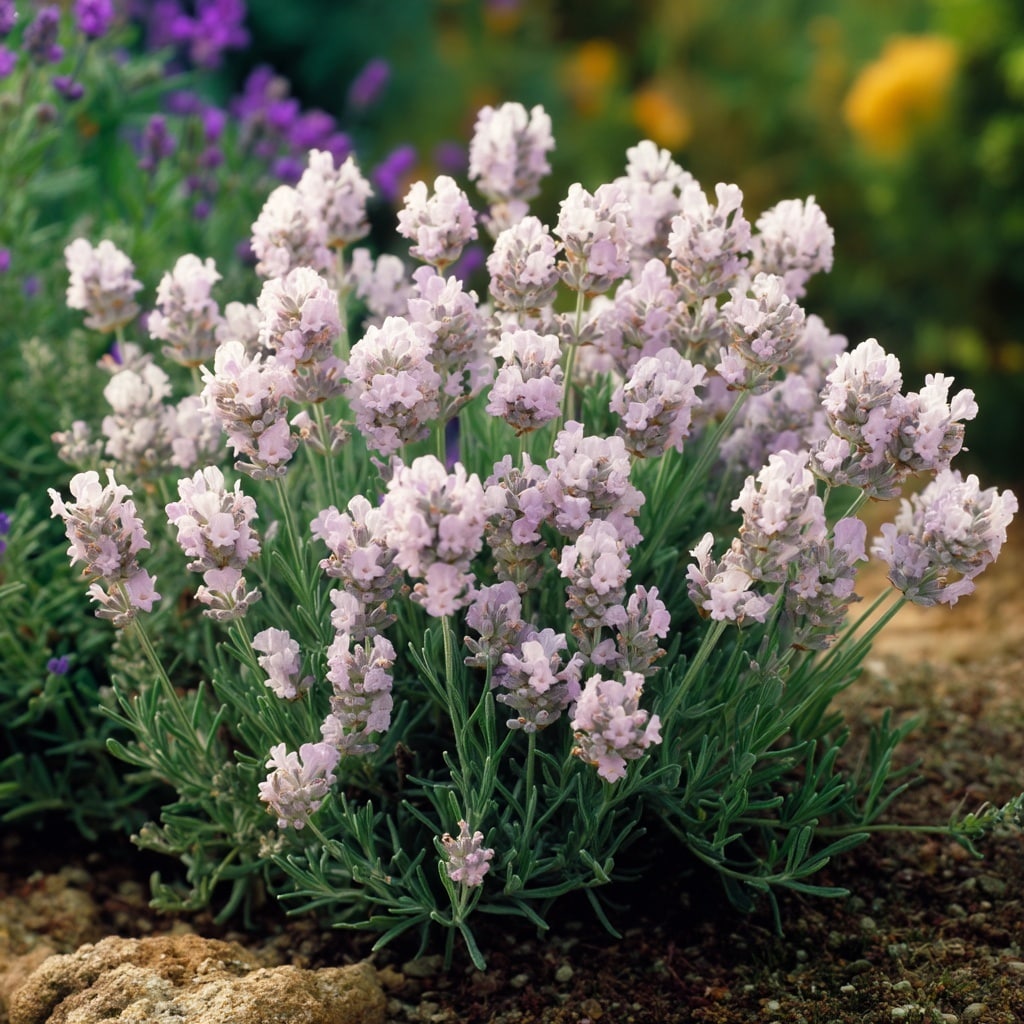Lavender is more than just a beautiful plant—it’s a sensory experience that brings color, calm, and a sweet aroma to any garden. Among the many types available, gardeners often seek out fragrant lavender varieties that not only look stunning but also fill the air with their signature calming scent. Known for its resilience, lavender thrives in sunny spots and well-drained soil, making it a favorite even for beginner growers. With so many cultivars to choose from, finding the right one can transform your outdoor space into a peaceful, purple oasis. In this guide, we’ll explore five heavenly-scented types of lavender worth growing in your garden.
Table of Contents
Folgate Lavender
Folgate lavender is a standout early bloomer prized for its vibrant violet flowers and compact, tidy shape. Reaching a modest height of 20 to 24 inches, this variety forms dense green mounds with narrow evergreen foliage and upright flower spikes. Its soft, sweet fragrance makes it an excellent choice for planting near walkways, in rock gardens, or as a low hedge along sunny borders.
Gardeners love Folgate for its versatility—it’s perfect for culinary use, fresh bouquets, and even crafting lavender oil. This variety thrives in full sun, well-drained sandy soil, and needs little water once established. Bonus: it’s bee-friendly, attracts butterflies, and resists deer and rabbits, making it both beautiful and low-maintenance.
Royal Velvet Lavender

Royal Velvet lavender lives up to its name with deep, velvety purple-blue flower spikes that reach 3 to 4 inches long. This elegant variety is known for its strong fragrance and showy appearance, making it a favorite for ornamental gardens and floral arrangements. The tall, graceful stems sway in the breeze and, with proper care, can produce a second flush of blooms after a mid-season trim.
Ideal for full sun and sandy, well-drained soil, Royal Velvet is low-maintenance and drought-tolerant once established. Its long-lasting color makes it excellent for dried wreaths and fresh bouquets alike. Like most lavender types, it attracts pollinators while repelling deer and rabbits—beauty and function all in one.
Super Blue Lavender

Super Blue lavender is a compact and colorful variety that packs a lot of charm into a small space. Growing just around 12 inches tall, it features tight clusters of rich lavender-blue flowers that offer a more solid and vibrant appearance than many other types. This dense growth habit not only boosts color impact but also makes it perfect for edging walkways, planting in containers, or adding structure to small garden beds.
Its strong, soothing scent emerges in early summer and lingers, making it ideal for cutting and drying. Super Blue thrives in full sun and sandy, well-draining soil, requiring little water once established. For gardeners seeking fragrant lavender varieties that fit in tight spaces, this is an excellent choice.
Melissa Lavender

Melissa lavender brings a soft, romantic touch to the garden with its pale lilac blooms that often appear almost white from a distance. Named by an Oregon grower for his wife, this variety is cherished for both its delicate color and sweet, lingering fragrance. The silvery-green foliage adds contrast and texture, and when brushed against, releases a lovely scent that enhances its ornamental appeal.
This upright, compact plant is highly prolific, producing an abundance of blooms that are excellent for fresh bouquets or culinary use. Like other lavender types, Melissa thrives in full sun and sandy, well-drained soil, and is tolerant of drought. It’s also bee-friendly, attracts butterflies, and naturally deters deer and rabbits—ideal for a peaceful, pollinator-friendly garden.
Hidcote Lavender

Hidcote lavender is a classic favorite, famous for having the darkest purple blooms of all lavender types. Its compact, slightly floppy growth habit gives it a soft, informal look, reaching heights of 12 to 20 inches and spreading up to 30 inches wide, depending on soil conditions. Despite its shorter stems, Hidcote produces intensely aromatic flowers that are ideal for drying, cooking, or edging pathways.
This variety is known for extended blooming—under the right conditions and with regular deadheading, it can flower repeatedly until the first frost. The citrusy undertones in its scent make it a top choice for culinary use, while its strong color retention when dried adds to its value for crafts and décor. Like all the lavender varieties on this list, Hidcote is drought-resistant, pollinator-friendly, and deer-resistant, making it both fragrant and functional.
Conclusion
Whether you’re new to gardening or a seasoned green thumb, choosing the right lavender variety can make all the difference in creating a serene and aromatic outdoor space. From the rich hues of Royal Velvet to the compact charm of Super Blue, each type brings its own unique beauty and fragrance. With proper care—full sun, sandy soil, and minimal watering—these fragrant lavender varieties will reward you with long-lasting blooms and a garden buzzing with life.





